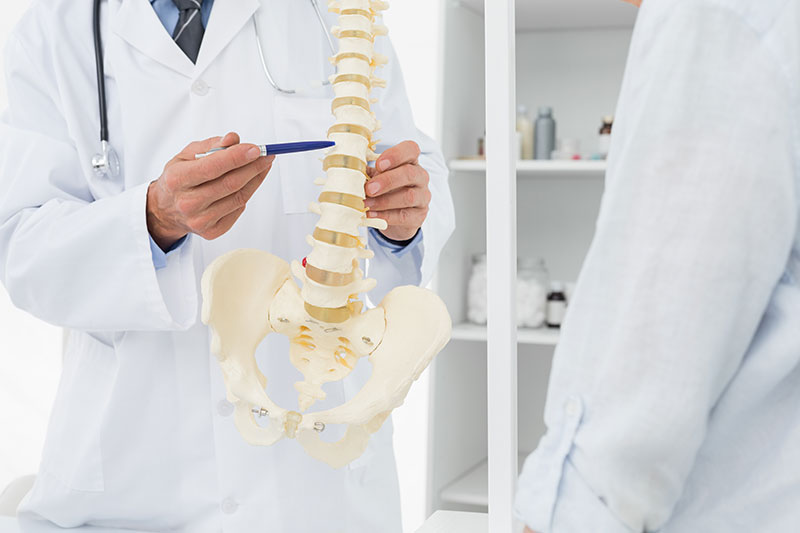
Treatment Options
Treatment for pelvic pain requires a comprehensive history and physical examination to identify the sources of pain and understand how it is impacting the patient. Workup includes an orthopedic, neurologic and pelvic examination. Bloodwork or imaging studies may be required. Ultrasound may reveal possible muscle, tendon, ligament, or nerve injury which may be contributing to pelvic pain.
Treating chronic pelvic pain may require collaboration amongst multiple specialties including primary care, OBGYN, urology, gastroenterology, psychology and a pelvic floor physical therapist.
Physical Medicine & Rehabilitation (PM&R) doctors are well-equipped to facilitate interdisciplinary care to help you find relief for your pain.
Treatment plans vary widely based on condition but may include:
- Manual therapy, myofascial release, Osteopathic Manipulative Treatment (OMT)
- Heat therapy
- Shockwave therapy
- Trigger point injections or nerve blocks
- Electrical stimulation (TENS, NMES)
- Vaginal dilators
- Pelvic floor physical therapy
- Counseling
- Supplements and Dietary Modifications
- Medications
- Surgery, in some cases
The NESS Clinic focuses on helping guide rehabilitation efforts to relieving pain and optimizing function and quality of life. We collaborate directly with some of the top experienced pelvic floor physical therapists in Los Angeles to provide precision care with empathy and compassion.
Current treatments at NESS include:
- Shock wave therapy for primary dysmenorrhea
- Shock wave therapy for chronic prostatitis
- Osteopathic Manipulative Treatment for chronic pelvic pain

Our Approach
- Investigate the full nature of your symptoms.
- Recognize how your symptoms have resulted in a unique change in your quality of life (movements, activities, hobbies or tasks that have been affected).
- Diagnosis utilizing physical examination and advanced technology such as ultrasound.
- Create an evidence-based, personalized treatment plan based on available treatment options.
- Help facilitate a comprehensive rehabilitation program that may include physical therapy and/or a home exercise program.
Find relief from pain today.

What is chronic pelvic pain?
Pelvic pain refers to pain symptoms experienced in the areas between your lower abdomen and upper thighs. This includes the inner hip, groin, buttocks and genital areas. Pelvic pain is very common and can have many sources aside from pain including difficulties with urinating or bowel movement and sexual dysfunction. Pelvic pain is complex as pain generators can be multifactorial and difficult to diagnose. It is important to rule out organ-related causes of pelvic pain with appropriate specialties (internal medicine, obstectrics/gynecology, urology, etc...) which may require different methods of treatment.
Pelvic pain can be quite debilitating and lead to a sexual dysfunction, bowel or bladder dysfunction, pain with activities, movements, and positions leading to a decline in function and quality of life.
Some common causes of pelvic pain in women include:
Dysmenorrhea (menstrual cramps).
Prevalence of 20-90%, most common gynecological problem.
Primary Dysmenorrea: Presents within 3 years of menarche
Symptoms: sharp, intermittent spasms, typically suprapubic area. May radiate into lower back and inner thighs. Usually begins a few hours before or at onset of menstrual flow, peaking within heaviest flow (day 1 or 2). Severity can last hours to days.
Associated symptoms: muscle cramps, abdominal pain, pelvic pain, nausea, vomiting, loss of appetite, diarrhea, fatigue, fever, headaches, back pain, leg pain, dizziness, light-headedness, flushing/cold sweats, syncope (fainting), sleep disturbance, body aches, depression, anxiety, irritability, nervousness
Cause: increased prostaglandin release which stimulate uterus to contract during menstruation and childbirth. Females with dysmenorrhea have been found to have higher levels of prostaglandins in their menstrual fluid. A study by Dawood and colleagues in 2006 found that intensity of menstrual cramps is directly proportional to prostaglandins released. Prostaglandin release stimulates contraction of uterine musculature. This leads to increased pressure and decreased blood flow in the uterus. This leads to cramping pains.
Women with dysmenorrhea are also more susceptible to anxiety and depression. This can affect processing and perception of pain intensity.
Secondary Dysmenorrhea:
Occurs years after painless menstruation and is typically associated with another condition.
Criteria:
1. Onset during the first one or two cycles after menarche (onset of periods)
2. Onset over age 25
3. Late onset after a history of painless menstruation (rule out ectopic pregnancy or threatened spontaneous abortion)
4. Pelvic abnormality on examination, infertility, or irregular menstrual cycle
5. Little or no response to NSAIDs, oral contraceptives, or both.
Pelvic floor dysfunction (pelvic floor muscles, ligaments, and fascia that are too tight or loose)
Gynecological issues such as Pelvic Inflammatory Disease (PID), Uterine Fibroids, Intrauterine contraceptive devices (IUD), Endometriosis, Inflammatory bowel disease (IBD) or ovarian cysts.
Referred pain from other sources: spine, nerves, etc.
Male causes of pelvic pain include chronic prostatitis and pelvic floor dysfunction.

